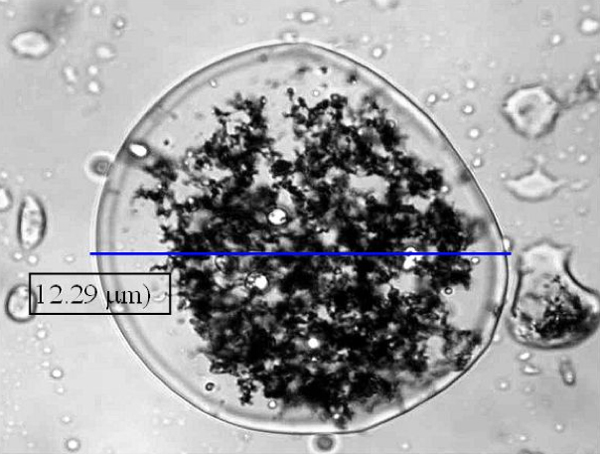
Invention of the Year Award for 2005
The Government and Commercial Invention of the Year Awards for 2005 went to EZVI Zero-Valent Metal Emulsion for Reductive Dehalogenation of DNAPL-Phase Environmental Contaminants. Halogenated solvents, such as trichloroethene (TCE), are used by industry as degreasers in the production of dry cleaning fluids, spot removers, insecticides and pesticides, as well as in many other manufacturing processes. These solvents enter the groundwater and soil environments through improper disposal practices, and are of great concern due to their toxicity and their persistence in the environment. When released into the ground, halogenated solvents, such as TCE, will sink through the subsurface soil and groundwater until it is contained by a nonpermeable surface such as bedrock. At this point it will pool and slowly dissolve into the aquifer in which it was released. Halogenated solvents that have higher densities than water are referred to as Dense Nonaqueous Phase Liquids (DNAPLs). Due to the low solubility of many halogenated solvents, the pool will continue to contaminate groundwater for extended periods of time. As the groundwater is in constant motion, this pool can contaminate very large areas of the potential drinking water.
Breakdown of halogenated solvents in natural environments is very slow and produces other potential harmful by-products. EZVI is a surfactant-stabilized, biodegradable water-in-oil emulsion with zero-valent metal particles contained within emulsion micelles. EZVI may contain either nanoscale zero-valent iron particles or microscale iron particles that are used to dehalogenate DNAPLs. EZVI was developed at NASA’s Kennedy Space Center to degrade very high concentration halogenated compounds like the cleaning solvents that NASA used ubiquitously during the Gemini and Apollo programs. These solvents, which are now known to be carcinogenic, were often disposed of into the subsurface at a number of NASA Centers. Subsequently, it has become NASA's responsibility to return impacted natural media to as near pristine conditions as possible. The spinoffs into cleaning the environment are manifold and of immense value.
 ICB Home
ICB Home Back
Back

